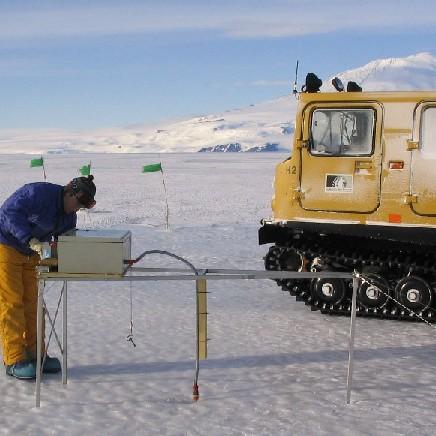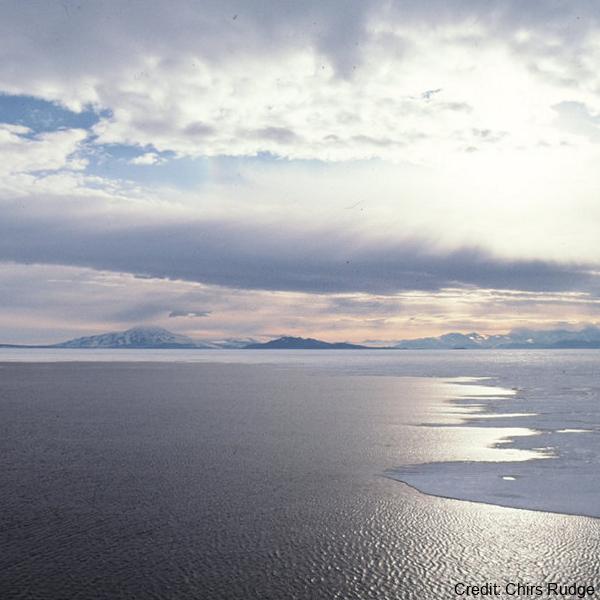Thermistors
Type of resources
Topics
Keywords
Contact for the resource
Provided by
Years
status
-

Data provided here have been collected as part of the project "Measurements and Improved Parameterization of the Thermal Conductivity and Heat Flow through First-Year Sea Ice", OPP-0126007* and include measurements of temperature and various ice properties at selected sites in first-year and multiyear sea ice in McMurdo Sound, Antarctica in the years 2002-2004. Data from earlier installations of thermistor chains for measurements of ice temperature carried out by the New Zealand team have also been included. Data files are in Microsoft Excel format, with individual worksheets for specific cores or temperature data sets. Detailed information and comments on data sampling location etc. are provided in the files. Further information on data collection, results etc. can be found in the following publications: Backstrom, L. G. E., and H. Eicken 2007, submitted, Capacitance probe measurements of brine volume and bulk salinity in first-year sea ice, Cold Reg. Sci. Tech. Pringle, D. J., H. Eicken, H. J. Trodahl, and L. G. E. Backstrom 2007, submitted, Thermal conductivity of landfast Antarctic and Arctic sea ice, J. Geophys. Res. Trodahl, H. J., S. O. F. Wilkinson, M. J. McGuinness, and T. G. Haskell 2001, Thermal conductivity of sea ice; dependence on temperature and depth, Geophys. Res. Lett., 28, 1279-1282. Data are in Microsoft Excel format. Abbreviations: AH = Arrival Heights; CH = Camp Haskell (near Delbridge Islands); VUW = Victoria University Wellington; UAF = University Alaska Fairbanks. RELATED PUBLICATION: https://doi.org/10.1017/jog.2022.108 GET DATA: https://drive.google.com/drive/folders/1ooUH9dPvWT66afFC51Cb0JOHg66rn0sy
-

Temperature and salinity observations were made at nominal depths of 75 m and 100 m, respectively, by Sea Bird Electronics sensors. Acoustic volume backscatter measurements were made by an ASL Environmental Sciences Acoustic Zooplankton Fish Profiler (AZFP) operating at four-frequencies (125 kHz, 200 kHz, 455 kHz and 769 kHz). The AZFP profiled the top 25 m of the water column in 0.1 m bins. All instruments were deployed through a landfast sea ice cover that was approximately 2 m thick. The WWW Tide and Current Predictor model was used to generate tidal height forecasts for the deployment periods. Ocean salinity was recorded at 10 second intervals by a Seabird Electronics SBE 37 microCAT CTD at a nominal depth of 100 m in McMurdo Sound at 77.6152 °S, 164.8821 °E. The dates covered by the salinity observations at 100 m depth are from 28-10-2016 06:43:11 UTC to 13-11-2016 21:59:51 UTC. The salinity is reported in units of practical salinity. Ocean temperature was recorded at 10 second intervals by a Seabird Electronics SBE 56 thermistor at a nominal depth of 75 m in McMurdo Sound at 77.6152 °S, 164.8821 °E. The dates covered by the temperature observations at 75 m depth are from 28-10-2016 06:43:11 UTC to 13-11-2016 21:59:51 UTC and 3-11-2017 08:26:01 UTC to 20-11-2017 23:00:01 UTC. The temperature is reported in units of °C in the ITS-90 temperature scale. Tidal height forecast data were produced from the WWW Tide and Current Predictor (http://tbone.biol.sc.edu/tide/tideshow.cgi?site=Ross+Island%2C+Antarctica) for Ross Island, Antarctica, for the period of the 2016 AZFP deployments. Related publication: Frazer, E. K., Langhorne, P. J., Leonard, G. H., Robinson, N. J., & Schumayer, D. (2020). Observations of the size distribution of frazil ice in an Ice Shelf Water plume. Geophysical Research Letters, 47, e2020GL090498. https://doi.org/10.1029/2020GL090498 GET DATA: https://doi.org/10.1594/PANGAEA.923762
 GeoData.NZ
GeoData.NZ